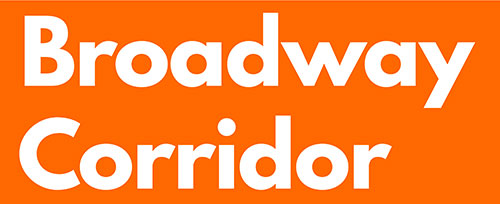PUTTING PEOPLE FIRST
Previous downtown development projects have propelled Portland’s economic growth and contributed to Portland’s reputation as a popular destination city. However, many downtown projects have failed to benefit - or have negatively impacted - longtime residents and community members, particularly low-incomes residents and communities of color.
Project leaders want to engage and partner with Portlanders to co-design the 32-acre site. Input and guidance from the community is particularly critical early in the process to legitimize the project, create goodwill, identify potential opportunities, and develop stakeholder buy-in, which will ultimately maximize the project’s community benefits.
The Broadway Corridor presents the opportunity to enable social interactions, break down barriers, expand civic engagement, create common public spaces, deliver affordable housing units, support small businesses, create jobs, and deliver sustainable development.
The strategic vision and development approach for the Broadway Corridor includes an emphasis on authentic and inclusive public involvement and on equitable distribution of public benefits and outcomes. Robust community engagement efforts started with the selection of a Steering Committee, composed of 41 leading community members to guide, direct and support efforts to solicit development partner(s), prepare a master plan for future development, improve community relations, and define required public benefits.
Alongside the Steering Committee process, we sought to engage a diversity of community members in a meaningful way. Through town hall meetings, pop-up events, online forums and focus groups, more than 1000 people provided meaningful input with a disproportionately high participation from people of color. Read more about our community engagement process.
Values
The Broadway Corridor project team and its stakeholders are committed to promoting social equity by reducing disparities, extending community benefits, building affordable housing and improving socio-economic opportunities for underserved and underrepresented people. The project team is also committed to true and authentic community engagement, intentionally involving underserved and underrepresented communities in the decision-making process, design and build-out of the project.
Vision
The Broadway Corridor is an urban development project which will permanently change Portland’s downtown landscape, knit the city together, attract regional, national and international media attention, and catalyze significant private investments. The Broadway Corridor project approach acknowledges historic disparities; considers what is being created for future generations; fosters culture, social equity and inclusion in a genuinely transparent and equitable way; and reimagines how people live, work, enjoy and move through the city. The project is envisioned as a unique, diverse, vibrant, sustainable, mixed-use, dense urban district seamlessly integrated with a regional multi-modal transportation hub.
Guiding Principles and Project Goals
The findings of a Racial Equity Impact Assessment are essential to the implementation of the Broadway Corridor vision and ensuring that development is consistent with the guiding principles below. Those principles include being intentional about who benefits from the opportunities created; assessing and mitigating potential impacts/burdens; ensuring a diversity of communities influence decisions from planning through development and programming; and strengthening partnerships required to advance the vision.
All aspects of the Broadway Corridor development, both public and private, will be:
Accountable. Implement a robust, proactive and transparent strategy that is a responsible expenditure of public funds, attracts private investment, and delivers targeted and equitable public benefits, with clear and enforceable milestones and metrics
Project Goals:
1. Identify and promote clear, long-term, and enforceable financial, community benefit, and environmental metrics that reflect best practices at all stages of design, development and operations.
2. Intentionally engage communities of color and other under-served and under-represented people in decisions in all stages of the process, including future oversight, in a manner that encourages community interaction and is welcoming to and informed by Portlanders of all ages, abilities, cultures, and background; integrate input received via meaningful public engagements.
Connected. Leverage regional and local assets to strengthen multimodal transportation connections and improve accessibility to and through the area for all
Project Goals:
3. Improve safe, reliable, and affordable access for low income communities including connecting affordable housing with employment providing adequate wages.
4. Create a coordinated and efficient multimodal transportation system that encourages people to choose healthy, active, and low‐carbon transportation modes and systems, and enhances the economic competitiveness of the region.
5. Enhance Union Station as an active center and destination.
6. Provide an accessible, active, vibrant streetscape prioritizing pedestrian and bike infrastructure that enhances the neighborhood greenway system and builds connectivity with adjacent neighborhoods.
Equitable. Promote social equity, reducing disparities, and extending community benefits
Project Goals:
7. Improve socio-economic opportunities for people of color, such as through affordable commercial space for diverse businesses, workforce training, and contracting opportunities.
8. Strong commitment to utilizing a combination of certified minority-owned, woman-owned and DBE firms and union vendors in design, construction and ongoing operations to create living wage jobs for a diverse workforce.
9. Provide adequate and affordable housing serving households earning 0 – 60% median family income (MFI) with a portion targeted to serving households earning 0 – 30% MFI.
10. Provide a mix of housing units, including family sized and multi-generational housing.
11. Provide integrated mixed-income development including housing and commercial space for all income levels.
12. Utilize Universal Design to ensure public and private development can benefit and be utilized by all, and public spaces are welcoming to all community members.
13. Advance Environmental Justice principles to ensure development does not exacerbate historical inequities in regards to the impacts of environmental and health hazards including air pollution and urban heat island effect especially on communities of color and low-income communities.
Prosperous. Foster economic and wealth prosperity for all through opportunities for innovation, creativity, education, and economic growth in the region
Project Goals:
14. Create living wage jobs for all, at all skill levels and with career pathways, through partnerships with tenants, particularly providing employment and job training opportunities for communities of color and other underserved populations.
15. Leverage large central site as a regional employment hub and recruit major anchor High Road Employer.
16. Provide a diverse range and size of businesses, including stabilizing and growing small local businesses and providing opportunities for innovation and starting new businesses.
Resilient. Demonstrate leadership in sustainability, health and integration of the built environment with the natural environment and to promote human interaction with their environment.
Project Goals:
17. Implement strategies that achieve the Portland Plan and Climate Action Plan’s goals to become an equitable, ecologically healthy, zero net-carbon and fossil fuel free city
18. Create a thriving and healthy built environment that promotes human, social, and ecological interaction.
Vibrant. Create a unique and aesthetically stunning, mixed-use community that welcomes and reflects diversity, integrates private with public spaces, and enriches the quality of life for existing and new Portlanders of all ages, cultures, and backgrounds
Project Goals:
19. Promote groundbreaking design in a truly mixed use, diverse and active 24-hour large urban development that supports pedestrian-scale and the public realm, and is designed to become a new Portland icon.
20. Provide high quality green and hardscape open space including extending the Park Blocks, and providing amenities for families, public spaces for events, seating areas, and landmark artwork (Connect parks, neighborhood greenways and public/private open space as an integrated system).
21. Include amenities that meet neighborhood needs and are accessible to all segments of the community, such as a community center, educational use, library or recreational facility.
22. Connect past and future of the place and the people who have been here.
23. Support diverse arts, cultural artists, and art organizations through the design, construction, and operational phases of the project.






